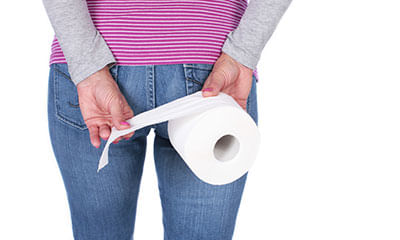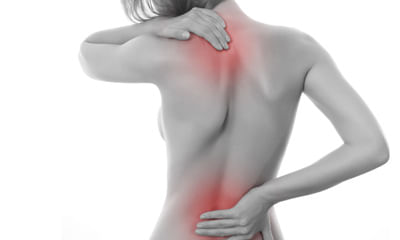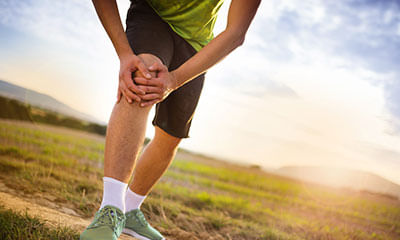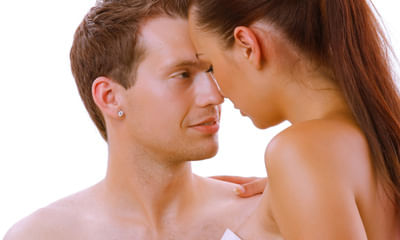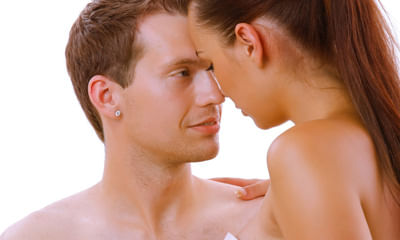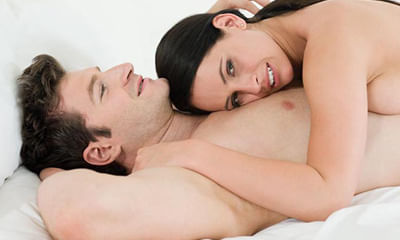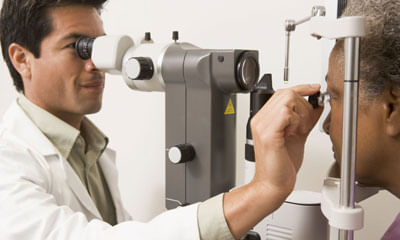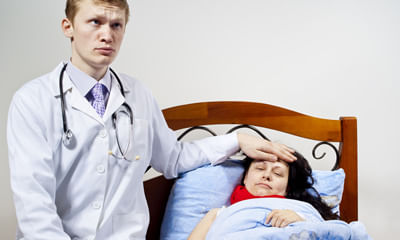Symptoms Of Blocked Veins
My dad have severe intense pain in rectum since 20 years. My dad have no bleeding, no constipation, no piles ,no fissure ...
Ask Free Question
Follow these herbal combinations for complete cure sootshekhar ras 1 tablet twice a day pittari avleh 10 gm twice a day.
Sir, I have leg pain before 1 year ago. I am 17 year old girl. My one vein was little block. But pain is very high. Plea ...
Ask Free Question
If you have leg pain then you have to rule out the casues for having leg pain. First of all check your weight and your haemoglobin levels, as anaemia always leads to the symptoms of being tired and also having leg pain though there are no issues with the knee joint or back pain. If not if the pain radiates down the back of thigh and legs then it might be due to sciatica. Kindly consult the nearby physiotherapist. Hope you recover soon from the leg pain. Pain in the back while walking and standing pain in the right legif you have leg pain please check your body weight and your hemoglobin levels, as anemia always leads to the symptoms of being tired and also having leg pain though there may not be any pathological reasons for back pain. My suggestion would be to wear mcr chappals which will help you to prevent the weight falling on the if you have back pain while walking and standing first of all check your weight and your hemoglobin levels, as anemia always leads to the symptoms of being tired and also having back pain though there may not be any pathological reasons for back pain. My suggestion would be to wear mcr chappals which will help you to prevent the weight falling on the back. And also should check whether you have flat foot on the right leg that also might be the reason to have pain in one particular legpain in the left side of the leg/thighthe compression of the sciatic nerve should be around the right side that's the reason you have pain in the left side. That's the reason you cannot sit or stand and it is exactly around the l5 vertebrae where the sciatic nerve passes by.
I am 27 year old .feeling body pain nd joint pain elbow and knees. Can I take this medicine. ...
Ask Free Question
•rest. Avoid activities that aggravate your elbow pain. •pain relievers. Try over-the-counter pain relievers, such as ibuprofen (advil, motrin ib) or naproxen (aleve). •ice. Apply ice or a cold pack for 15 minutes three to four times a day. •technique. Make sure that you are using proper technique for your activities and avoiding repetitive wrist motions. Physical therapy. Specific exercises are helpful for strengthening the muscles of the forearm. Your therapist may also perform ultrasound, ice massage, or muscle-stimulating techniques to improve muscle healing. Brace. Using a brace centered over the back of your forearm may also help relieve symptoms of tennis elbow. This can reduce symptoms by resting the muscles and tendons. Fist clench 1.Sit at a table with your forearm resting on the table. 2.Hold a rolled up towel or small ball in your hand. 3.Squeeze the towel in your hand and hold for 10 seconds. 4.Release and repeat 10 times. Switch and do the other arm. Supination with a dumbbell 1.Sit in a chair holding a 2-pound dumbbell vertically in your hand with your elbow resting on your knee. 2.Let the weight of the dumbbell help rotate the arm outward, turning the palm up. 3.Rotate the hand back the other direction until your palm is facing downward. 4.Repeat 20 times on each side. 5.Try to isolate the movement to your lower arm, keeping your upper arm and elbow still. Wrist extension 1.Sit in a chair holding a 2-pound dumbbell in your hand with your palm facing down, resting your elbow comfortably on your knee. 2.Keeping your palm facing down, extend your wrist by curling it towards your body. If this is too challenging, do the movement with no weight. 3.Return to starting position and repeat 10 times on each side. 4.Try to isolate the movement to the wrist, keeping the rest of the arm still. Wrist flexion 1.Sit in a chair holding a 2-pound dumbbell in your hand with your palm facing up and elbow resting comfortably on your knee. 2.Keeping your palm facing up, flex your wrist by curling it towards your body. 3.Return to starting position and repeat 10 times on each side. 4.Try to isolate the movement to the wrist, keeping the rest of the arm still. Towel twist 1.Sit in a chair holding a towel with both hands, shoulders relaxed. 2.Twist the towel with both hands in opposite directions as if you are wringing out water. 3.Repeat 10 times then repeat another 10 times in the other direction. Unable to walk properly feeling like a vein got stretch in right leg mostly in knee without any pain. It might be due to varicose veins inflammation or it might be due to ligament injury in the knee. The conservative management would be to keep ice in that inflamed area during one time in a day and to wear either knee cap or varicose veins stockings knee pain, when leg folding time get pain. This must be due to your muscular strain and posture and it may not be due to any other reasons. It is better to correct your addictive behaviour by consulting the right physician. For the time being for the back pain, apply ice.Neck tilt: from the sitting position, tilt your head down so your chin touches your chest. Hold this position for 5 second s. Return to the starting position and repeat. Do this five times. Side-to-side neck tilt. From the same starting position, tilt you neck toward one shoulder, leading with your ear. Hold for 5 seconds and then return to the starting position. Do this five times on each side. Neck turn. Look straight ahead, then turn your head to one side, keeping your chin at the same level. Do this five times on each side. Neck stretch. Holding the rest of your body straight, push your chin forward, stretching your throat. Hold for 5 seconds. From the same starting position, push your chin backward and hold for 5 seconds. Do the forward and backward stretch five times each. If any of these exercises cause severe pain or weakness in your hands or arms, stop right away and talk with your doctor ice therapy would definitely help to reduce the inflammation. We also advise you to use knee cap which would help to prevent the knee from damaging further and also to maintain the quadriceps muscle tone. Stiffness have developed due to weakness of the ligaments &inflammed cartilage. Specific knee exercises will also help ie. Keeping ball underneath the knee and keep pressing it. That's the simple exercise which will help you to strengthen the knee. • ultrasound- which heals the damaged tissues and heals • electric stimulation / ift- which reduces the pain • kinesiology taping • application of heat or ice • soft tissue massages or knee joint mobilization 5 do’s & don’ts to reduce your knee pain. 1. Don’t take too much rest- not only your body muscles may become weaker even your joint’s pain may become worse. Take consultation from your physiotherapist to guide you with knee pain exercises which are safe for your knees & keep doing it. 2. Do exercise– exercises help in strengthening the muscles, increase flexibility & also support your knee. You can also do swimming, walking, elliptical machines & bicycles, etc. 3. Don’t avoid your weight– excess weight may increase the stress on your knee and if you have inflammatory arthritis then it may become worse. You don’t need to have ideal weight, you just need to start working to reduce the weight. 4. Rice -this process is good for joint pain caused due to minor injury or an arthritis. • • r (rest) – give some rest to your knees. • I (ice) – massage your knees with ice to reduce swelling. • c (compression)- start wearing compression bandage. • e (elevation)- keep your knee elevated. 5. Don’t wear bad shoes- we actively wear shoes in our daily life for hours without noticing how it can affect your knees badly. So, if you are facing knee pain, then check your shoes first. Is it giving you good comfort? If not then change it urgently. The importance of buying braces and splints from us – orthopaedic support braces we suggest you to wear knee brace which is available at our clinic. If you want you can buy from us, if you are far away from chennai we can send you by courier. The reason why we are conveying you to buy from us is we can demonstrate over the videocall (using whatsapp) and also we can monitor you throughout when to wear it and how long to wear it. And also if you find any difficulty wearing the brace you can also revert back to us for few more suggestions and we can propose you good solution how to go about it. Resisted terminal knee extension: make a loop with a piece of elastic tubing by tying a knot in both ends. Close the knot in a door at knee height. Step into the loop with your injured leg so the tubing is around the back of your knee. Lift the other foot off the ground and hold onto a chair for balance, if needed. Bend the knee with tubing about 45 degrees. Slowly straighten your leg, keeping your thigh muscle tight as you do this. Repeat 15 times. Do 2 sets of 15. If you need an easier way to do this, stand on both legs for better support while you do the exercise. Standing calf stretch: stand facing a wall with your hands on the wall at about eye level. Keep as arthritis is very common that you get generally bilaterally. Ice therapy would definitely help to reduce the inflammation. We also advise you to use knee cap which would help to prevent the knee from damaging further and also to maintain the quadriceps muscle tone 1. Heel and calf stretch to do this stretch: 1. Stand facing a wall. 2. Place your hands on the wall and move one foot back as far as you can comfortably. Toes on both feet should be facing forward, heels flat, with a slight bend in your knees. 3. Lean into the stretch and hold for 30 seconds. You should feel the stretch in your back leg. 4. Change legs and repeat. 5. Do this stretch twice for both legs. Short arc quad / isometeric quad exercise the short arc quad exercise is a great way to really focus in on properly contracting your quadriceps muscles. Here is how you do it: lie on your back and use a yoga block or basketball to prop your knee up. Slowly straighten your bent knee until it is all the way straight. Tighten your quad muscle with your toes pointed toward the ceiling and hold it tight for five seconds. Slowly lower your leg down. Repeat for 15 repetitions. Quadriceps, isometric (strength) this exercise is for an injured right knee. Switch sides if the injury is to your left knee. 1. Sit on the floor with your right leg straight in front of you. Bend your left knee up and put your left foot flat on the floor. 2. Flex your right foot and tighten the thigh muscles of your right leg. Press the back of your right knee toward the floor. Don’t arch your back or hunch your shoulders. 3. Hold for 5 to 10 seconds. Then relax. 4. Repeat 10 times, or as instructed. 5. Do this exercise 3 times a day, or as instructed. 2. Quadriceps stretch to do this stretch: 1. Stand next to a wall or use a chair for support. Your feet should be shoulder-width apart. 2. Bend one knee so your foot goes up toward your glutes. 3. Grab your ankle and gently pull it toward your glutes as far as you can comfortably. 4. Hold for 30 seconds. 5. Return to the starting position and change legs. 6. Repeat 2 times on each side. Hamstring stretch • take a break from strenuous activities to allow the injury to heal. • use a cane or crutches to avoiding putting your full weight on your injured leg. • apply ice packs several times a day to relieve pain and reduce swelling. • wrap the injured area with a compression bandage or wear compression shorts to minimize swelling. • rest with your leg elevated above the level of your heart, if possible, to improve drainage and minimize swelling. To do this stretch: to do this stretch: 1. For this stretch, you can use a mat to add cushioning under your back. 2. Lie down on the floor or mat and straighten both legs. Or, if it’s more comfortable, you can bend both knees with your feet flat on the floor. 3. Lift one leg off the floor. 4. Place your hands behind your thigh, but below the knee, and gently pull your knee toward your chest until you feel a slight stretch. This shouldn’t be painful. 5. Hold for 30 seconds. 6. Lower and change legs. 7. Repeat 2 times on each side. Strengthening exercises 5. Half squat to do this exercise: 1. Get into a standing squat position with your feet shoulder-width apart. Place your hands on your hips or out in front of you for balance. 2. Looking straight ahead, slowly squat down about 10 inches. This is the halfway point to a full squat. 3. Pause for a few seconds, then stand up by pushing through your heels. 4. Do 2 to 3 sets of 10 repetitions. 5. Calf raises to do this exercise: 1. Stand with your feet shoulder-width apart. Position yourself next to a wall or hold on to the back of a chair for support. 2. Lift both your heels off the ground so that you’re standing on the balls of your feet. 3. Slowly lower your heels to the starting position. Control is important with this exercise for strengthening your calf muscles. 4. Do 2 to 3 sets of 10 repetitions. 6. Hamstring curl 7. Leg extensions to do this exercise: 1. Sit up tall in a chair. 2. Put your feet flat on the floor, hip-width apart. 3. Look straight ahead, contract your thigh muscles, and extend one leg as high as possible without raising your buttocks off the chair. 4. Pause, then lower to the starting position. 5. Do 2 to 3 sets of 10 repetitions for each leg. 8. Straight leg raises to do this exercise: 1. For this exercise, you can use a mat to add cushioning under your back. 2. Lie down on the floor with one leg bent and one leg straight out in front of you. 3. Contract the quadricep of your straight leg and slowly raise it up off the floor until it’s the same height as your bent knee. 4. Pause at the top for 5 seconds, then lower to the starting position 5. Do 2 to 3 sets of 10 repetitions for each leg. 9. Side leg raises to do this exercise: 1. Lie on your side with your legs stacked on top of each other. Cradle your head in your hand, and place your other hand on the floor in front of you. 2. Raise your top leg as high as you comfortably can. You should feel this on the side of your hips. 3. Pause briefly at the top, then lower your leg. 4. Do 2 to 3 sets of 10 repetitions for each leg. 10. Prone leg raises to do this exercise: 1. For this exercise, you can use a mat to add cushioning beneath you. 2. Lie on your stomach with your legs straight out behind you. You can let your head rest on your arms. 3. Engage your glute and hamstring muscles in your left leg and lift your leg as high as you comfortably can without causing pain. Be sure to keep your pelvic bones on the floor throughout this exercise. 4. Hold your leg in the lifted position for 5 seconds. 5. Lower your leg, rest for 2 seconds, then repeat. 6. Do 2 to 3 sets of 10 repetitions for each leg.
My penis got swelled and bump on top after masturbate, after one day swelling has gone but top of penis color is spotted ...
Ask Free Question
Hello- causes penile pains are commonly caused by fractures during sexual intercourse or by prolonged over masturbation. Other causes include use of penile pump or inflammation of the urethra (urethritis). A penis fracture can occur when there is trauma to the erect penis, resulting in rupture of the cylinder lining. The severity of penis pain caused by over masturbation develops in stages. First, the problematic stage, the sufferer experiences the initial signs of discomfort and finds it unsettling. The severe stage finds him in persistent pain. The addictive stage manifests itself sees an addition of headaches, while the final, severely addictive stage encompasses all of the aforementioned symptoms along with swollen penile veins that lead to poor testicular blood circulation, penile shrinkage and pain.
Sir I am 47 years old from long time I am suffering from erectile dysfunction and premature ejaculation. I have diabetic ...
Ask Free Question
1. Deep breathingâ take deep breaths and hold your breath for 5 second between each inhalation and exhalation. 2. Squeeze methodâ to do this, squeeze the head of the penis when you are at the brink of your orgasm. 3. Stop and start methodâ once you are close to your orgasm, stop the simulation. Relax and then continue till the end. Repeat the process for a few weeks and then you will become efficient in delaying your ejaculation. 4. Kegel exercises these exercises are aimed to help you gain better control over the muscles below your bladder. They strengthen your pelvic region, particularly creating strong pubococcygeus muscle. These are hammock shaped muscles that stretch from your pubic bone to tailbone, important for genital functioning. To perform these pelvic floor exercises, simply aim to control and stop your urine flow midway when you're in the bathroom. This will make you feel your pc muscle and then you will be able to relax it to regain normal urinary flow. Do this 10 times a day and you will be able to stop premature ejaculation. 5. Applying strategic pressureâ the first step is knowing about your perineum and putting pressure over it. Perineum is the spot that lies midway between the scrotum and the anus. It reaches the prostate gland and pressing it helps in delaying the ejaculation process. This happens since the path to the prostate gland gets blocked when you press. Generally, the prostate expands and contracts at the time of orgasm, until you ejaculate. Pressing it breaks the rhythm and delays satisfaction. 6. Limit the anxiety anxiety can make your ejaculate prematurely before any of you are satisfied with the intercourse. To limit the anxiety, practise running, dancing or strength training exercise before you are about to copulate. And then take a bath with lukewarm water.
Hi my age is 27 I have got piles which are at the start level I consulted a doctor he told me to go through a small surg ...
Ask Free Question
1. Take home cooked, fresh light food. Take a lot of green vegetables n fruit. 2. Increasing the fibre in your diet is known to be as effective as injections for preventing further problems 3. Increasing your fluid intake which can help prevent further problems with haemorrhoids 4. Avoiding straining and constipation which is the most useful thing patients can do to prevent the problem coming back. If the fibre content of your diet is not sufficient to keep your stools soft, then a fibre supplement can help. 5. Maintain active life style 6. Curd is good for u. 7. Avoid fast foods, spicy n fried foods homeopathy has very encouraging results. Consult online with details.
My age is 42 and married 2 years back and facing erection problem last one year and I want to have a child I smoke 1 to ...
Ask Free Question
Do kegel exercises-- firstly, find the pelvic floor muscles. You can achieve this by stopping mid-stream two or three times the next time you urinate. The muscles you can feel working during this process are the pelvic floor muscles, and they will be the focus of kegel exercises. One kegel exercise consists of tightening and holding these muscles for 5 seconds and then releasing them. Try to do between 10 and 20 repetitions each day. This may not be possible when you first start doing the exercises. However, they should become easier over time. You should be able to notice an improvement after 6 weeks. Make sure you are breathing naturally throughout this process and avoid pushing down as if you are forcing urination. Instead, bring the muscles together in a squeezing motion.
It's been around 4-5 months since i've had a small lump or more like a swollen piece of flesh on my eyelid below the eye ...
Ask Free Question
Hello. Based on your description, it looks like the lump is an infected swelling (can be cyst). Your symptoms also are suggestive of acute inflammation. Hot water fomentation helps a lot in such situation. So please do that. Also some oral medicines need to be started right away for controlling the infection and subjective relief, otherwise it may go into a stage of cellulitis. One needs to see the lump first for giving appropriate treatment. So kindly provide a photograph for the same. You can reach me out for further queries and treatment plan. Thank you.
I am masturbating for 10 years and had no pain even when I had erection in my pants. I changed my style of masturbation ...
Ask Free Question
Hello- Penile pains are commonly caused by fractures during sexual intercourse or by prolonged over masturbation. Other causes include use of penile pump or inflammation of the urethra (urethritis). A penis fracture can occur when there is trauma to the erect penis, resulting in rupture of the cylinder lining. The severity of penis pain caused by over masturbation develops in stages. First, the problematic stage, the sufferer experiences the initial signs of discomfort and finds it unsettling. The severe stage finds him in persistent pain. The addictive stage manifests itself sees an addition of headaches, while the final, severely addictive stage encompasses all of the aforementioned symptoms along with swollen penile veins that lead to poor testicular blood circulation, penile shrinkage and pain. Fortunately, ayurveda has a solution for that.
Suffering from oesophageal varices, low platelet count, ascites and liver cirrhosis. Now having fever, cough and cold. W ...
Ask Free Question
I am sorry to hear about your concern but will be happy to assist you. Esophageal varices are abnormal, enlarged veins in the tube that connects the throat and stomach (esophagus). This condition occurs most often in people with serious liver diseases. Esophageal varices develop when normal blood flow to the liver is blocked by a clot or scar tissue in the liver. Let's connect over a call so that we can discuss your concern in details and make a suitable treatment plan for you.

